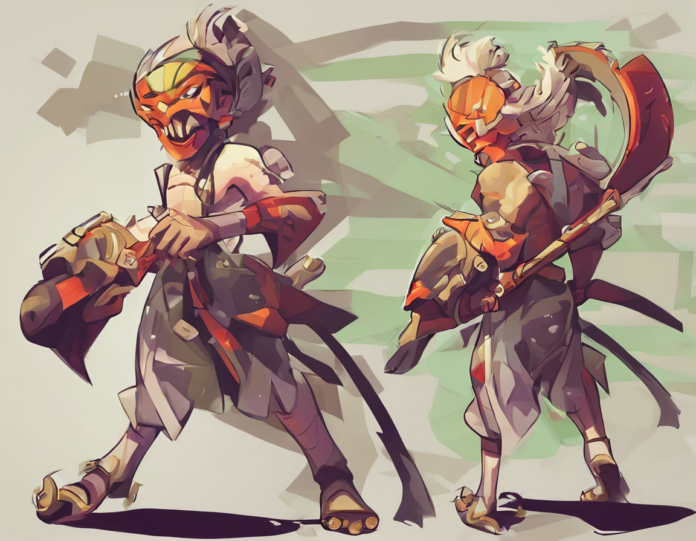Flamenco is a vibrant and passionate art form that originated in the Andalusian region of southern Spain. It encompasses various elements such as singing (cante), dancing (baile), guitar playing (toque), and handclaps (palmas). The music and dance style of Flamenco is deeply rooted in Spanish culture and history, making it a rich and profound expression of emotion and artistry.
History of Flamenco
Flamenco has a complex and fascinating history that dates back hundreds of years. Its origins can be traced to the diverse cultural influences in southern Spain, including Gypsy, Moorish, Jewish, and Andalusian cultures. Over time, Flamenco evolved from a blend of these diverse influences into a unique and powerful art form that is now recognized worldwide.
Cultural Influences
- Gypsy Influence: The Gypsies, who arrived in Spain in the 15th century, played a significant role in shaping Flamenco with their music, dance, and lifestyle.
- Moorish Influence: The Moors, who ruled Spain for several centuries, contributed to Flamenco through their music, rhythms, and dance styles.
- Jewish Influence: Jewish music and traditions also left a mark on Flamenco, adding depth and complexity to its repertoire.
- Andalusian Influence: The cultural heritage of Andalusia, with its unique traditions and folklore, also played a vital role in the development of Flamenco.
Elements of Flamenco
Flamenco is a multi-faceted art form that combines various elements to create a truly captivating performance.
Cante (Singing)
The singing in Flamenco is known as cante, and it is characterized by its raw emotion and powerful expression. Cante is often accompanied by the guitar and sets the tone for the entire performance.
Baile (Dance)
The dance aspect of Flamenco, known as baile, is a dynamic and passionate display of movement and expression. Flamenco dancers use their entire body to convey a range of emotions, from joy and exuberance to pain and sorrow.
Toque (Guitar Playing)
The guitar playing in Flamenco, referred to as toque, is a crucial element that provides the rhythmic and melodic foundation for the music and dance. Flamenco guitarists are highly skilled musicians who use intricate techniques to create a rich and vibrant sound.
Palmas (Handclaps)
Palmas, or handclaps, are an essential component of Flamenco music, providing a rhythmic accompaniment to the singing, dancing, and guitar playing. The intricate patterns of handclaps add depth and complexity to the overall sound of Flamenco.
Styles of Flamenco
Flamenco encompasses a wide range of styles, each with its unique characteristics and flavor. Some of the most common Flamenco styles include:
Solea
Solea is one of the oldest and most fundamental styles of Flamenco, known for its solemn and serious tone. It is characterized by its slow tempo and intricate footwork, making it a challenging style for dancers to master.
Alegrias
Alegrias is a more upbeat and joyful style of Flamenco, known for its lively rhythm and cheerful demeanor. Dancers often use colorful costumes and props to enhance the playful nature of Alegrias.
Bulerias
Bulerias is a fast-paced and energetic style of Flamenco, featuring rapid footwork and intricate hand movements. It is often performed as a finale to a Flamenco show, leaving audiences captivated by its lively and dynamic nature.
Learning Flamenco
Whether you are a seasoned dancer or a newcomer to the world of Flamenco, there are plenty of opportunities to learn and experience this captivating art form.
Dance Schools
Many cities around the world have Flamenco dance schools where enthusiasts can take classes and workshops to learn the art of Flamenco dancing. These schools often have experienced instructors who can teach students the fundamentals of Flamenco technique and style.
Music Schools
Flamenco guitar playing is a highly specialized skill that requires years of dedicated practice and study. Music schools that offer Flamenco guitar lessons can provide students with the knowledge and techniques needed to become proficient Flamenco guitarists.
Cultural Experiences
Traveling to Andalusia, the birthplace of Flamenco, can provide a unique and immersive cultural experience. Visitors can attend Flamenco performances, visit historical sites related to Flamenco, and even participate in workshops to learn more about the art form.
FAQs about Flamenco
1. What is the significance of the Flamenco dress?
The Flamenco dress, known as a "bata de cola," is an iconic symbol of the art form. Its long train and ruffled layers add drama and movement to the dance, accentuating the dancer's every move.
2. Is it necessary to have prior dance experience to learn Flamenco?
While prior dance experience can be helpful, it is not always necessary to learn Flamenco. Many beginners start with Flamenco classes tailored for all skill levels, allowing anyone with a passion for dance to learn and enjoy Flamenco.
3. How can I improve my Flamenco guitar playing skills?
Improving your Flamenco guitar playing skills requires dedication, practice, and expert guidance. Consider taking lessons from experienced Flamenco guitarists, studying traditional Flamenco compositions, and practicing regularly to enhance your skills.
4. What is the best way to appreciate Flamenco music?
To truly appreciate Flamenco music, it is essential to listen with an open heart and mind. Pay attention to the emotional nuances in the singing, the intricate rhythms in the guitar playing, and the dynamic energy in the handclaps and footwork.
5. What makes Flamenco such a unique and powerful art form?
Flamenco's unique blend of music, dance, and emotion makes it a powerful art form that resonates with audiences worldwide. Its raw passion, rich history, and cultural significance have made Flamenco a cherished and enduring tradition in Spanish culture.
In conclusion, Flamenco is more than just a dance or a style of music—it is a visceral expression of the soul that captivates audiences with its passion and intensity. Whether you are a performer, a student, or a spectator, Flamenco has the power to transport you to a world of emotion and artistry unlike any other. Embrace the passion of Flamenco and let its vibrant rhythms and stirring melodies awaken your spirit.


Recent comments